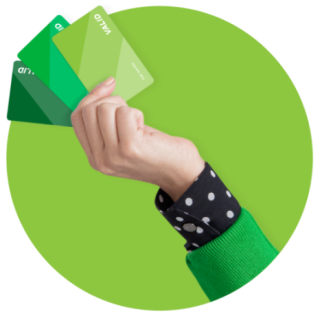
It's important to review it to know what you owe, when it's due, whether there are any errors and much more.
Updated Dec 1, 2023 11:08 a.m. PST · 1 min read Written by Erin El Issa Senior Writer Erin El Issa
Senior Writer | Data analysis, personal finance, credit cards
Erin El Issa writes data-driven studies about personal finance, credit cards, travel, investing, banking and student loans. She loves numbers and aims to demystify data sets to help consumers improve their financial lives. Before becoming a Nerd in 2014, she worked as a tax accountant and freelance personal finance writer. Erin's work has been cited by The New York Times, CNBC, the "Today" show, Forbes and elsewhere. In her spare time, Erin reads voraciously and tries in vain to keep up with her two kids. She is based in Ypsilanti, Michigan.
Assigning Editor Kenley Young
Assigning Editor | Credit cards, credit scores
Kenley Young directs daily credit cards coverage for NerdWallet. Previously, he was a homepage editor and digital content producer for Fox Sports, and before that a front page editor for Yahoo. He has decades of experience in digital and print media, including stints as a copy desk chief, a wire editor and a metro editor for the McClatchy newspaper chain.
Fact Checked
Many, or all, of the products featured on this page are from our advertising partners who compensate us when you take certain actions on our website or click to take an action on their website. However, this does not influence our evaluations. Our opinions are our own. Here is a list of our partners and here's how we make money.
Your credit card statement, while not the most exciting document to cross your path on a regular basis, is important to understand. Ideally, you’ll review this document each month, so you should know how to read your credit card statement and what you should to pay attention to.
Below is a summary of each of the basic statement sections, as well as an explanation of what you should focus on. While all credit card statements have the same basic information, the data may be presented in a slightly different order depending on your card issuer.
Ready for a new credit card?Nerdwallet+ members can earn $100 in rewards for paying their first bill on time with an eligible credit card.
GET STARTED
Your current balance: How much you owe, also known as your " outstanding balance ." Note that a current balance can be different from a statement balance .
The minimum payment due: For balances over $1,000, the minimum payment is usually 2% of the balance. If your balance is lower than that, it is more likely to be a flat fee of around $25.
The due date: If you don't make at least the minimum payment by the due date, you'll incur a late fee, and your credit score may be affected.
A minimum payment warning: Included on some statements, this explains how long it would take you to pay off the current balance if you made only the minimum payment and how much interest you would pay. That last part should serve as a monster motivating you to pay off your credit card debt. If you just stick to the minimum payment each month, you could easily end up paying more in interest than you charged in the first place.
Our advice: Credit card debt isn’t cheap, so aim to pay off your current/outstanding balance every month. Doing so may not be possible right now, but it should be your ultimate goal. Alternately, paying just your statement balance (which depending on your card use might be a smaller amount) will also allow you to avoid interest charges, though you will owe the remainder at the close of your next billing cycle. Otherwise, make at least the minimum payment. You won't avoid interest that way, but you will avoid late fees and, potentially, eventual damage to your credit scores.
How your current balance was calculated.
It begins with the previous month’s balance, subtracts recent payments and credits, and adds purchases, interest charges and fees to calculate the new balance. The account summary section also includes the card’s credit limit, available credit and cash advance limit.
The fun stuff! This section will be on your statement if you have a rewards credit card , such as a cash-back or travel card.
Where your points came from: Some statements will go into detail about which spending categories earned you points and how many points you earned. This is helpful for cards that earn higher rewards in specific categories, like dining out, groceries or transportation. It's also helpful for cards with rotating 5% cash-back categories .
Total rewards earned: The rewards you earned during this billing period.Our advice: Understand how your credit card’s rewards program works. Redeeming and enjoying rewards doesn't matter for your credit scores, but who doesn’t love cash and potentially free plane tickets ?
Our advice: You don’t need to read this part of your statement every month, but go through it at least once to familiarize yourself with your credit card’s policies. You’ll learn potentially useful information, like how your payments are applied or how your balance is calculated.
Our advice: Make sure refunds were processed and payments you made were applied to the balance. If you pay online — which you should — payments are applied within one to three days of clicking “submit.”
All the purchases you’ve made during this billing period. At a minimum, this will include the date, retailer and cost. Some issuers have more detailed statements, including the location of a retailer or a description of the type of retailer, like “grocery store” or “merchandise.” You’ll spend the majority of your statement review right here.
Our advice: Each month, go through your statement to verify you made each purchase. If there are unexplainable purchases listed, someone may have used your card to make fraudulent charges .
A list of each balance type — purchases, cash advances and balance transfers — along with the applicable annual percentage rates. The balance is subject to these rates and the subsequent interest charges.
Our advice: Ideally, you won’t be accumulating interest, but check over this data to make sure it’s correct. Also, double check that you aren’t being charged any fees in error. You may have a card with an annual fee, which is fine, but you don’t want to accumulate late payment fees or the like.
About the authorYou’re following Erin El Issa
Visit your My NerdWallet Settings page to see all the writers you're following.
Erin El Issa is a credit cards expert and studies writer at NerdWallet. Her work has been featured by USA Today, U.S. News and MarketWatch. See full bio.
On a similar note.

Download the app

Disclaimer: NerdWallet strives to keep its information accurate and up to date. This information may be different than what you see when you visit a financial institution, service provider or specific product’s site. All financial products, shopping products and services are presented without warranty. When evaluating offers, please review the financial institution’s Terms and Conditions. Pre-qualified offers are not binding. If you find discrepancies with your credit score or information from your credit report, please contact TransUnion® directly.
NerdUp by NerdWallet credit card: NerdWallet is not a bank. Bank services provided by Evolve Bank & Trust, member FDIC. The NerdUp by NerdWallet Credit Card is issued by Evolve Bank & Trust pursuant to a license from MasterCard International Inc.
Impact on your credit may vary, as credit scores are independently determined by credit bureaus based on a number of factors including the financial decisions you make with other financial services organizations.
NerdWallet Compare, Inc. NMLS ID# 1617539
California: California Finance Lender loans arranged pursuant to Department of Financial Protection and Innovation Finance Lenders License #60DBO-74812
Insurance Services offered through NerdWallet Insurance Services, Inc. (CA resident license no.OK92033) Insurance Licenses
NerdWallet™ | 55 Hawthorne St. - 10th Floor, San Francisco, CA 94105